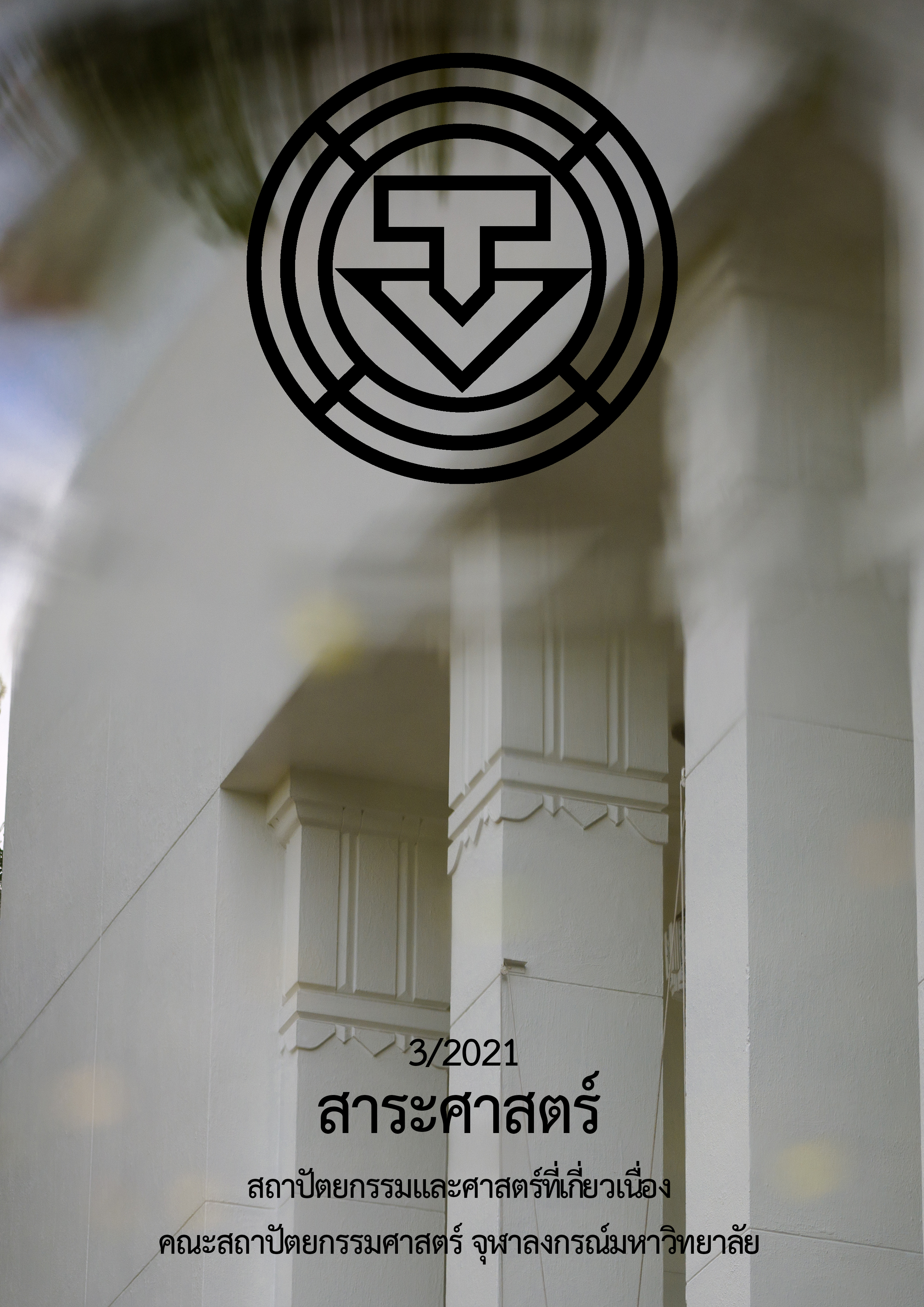Strategic Planning, Master Planning and Project Management Return of Zoo Project Case Study: Internationally Certified Zoos in The United States
Main Article Content
Abstract
Thailand is developing a new zoo project into a national zoo. Strategic and master plans are being made. Internationally certified zoos were studied in order to apply concepts, project plans and project management returns by reviewing literatures, analyzing and comparing the strengths of the development of the projects for significantly providing benefits for developing National zoos. Therefore, three zoos in the United States being certified according to the World Association of Aquarium and Zoo (WAZA) standard and receiving awards were studied as follows: Saint Louis Zoo, Denver Zoo, and Woodland Park Zoo. It was found that there were two types of project plans: 1) the main walkways surrounding the areas and the sub walkways leading to sub exhibition areas, and 2) the walkways surrounding the animal areas. Regarding the compensations, it was found that the fundraising, amounts of the three zoos were higher than other amounts. The zoo with the highest net operating income (NOI) was that with the lowest employment cost. The findings showed the importance of strategic planning that set the directions of the future developments and investments of the zoos as well as the financial returns of the zoo management. It also economically impact to the business areas around the zoos.
Article Details
References
เดชา บุญค้ำ. (2557). การออกแบบผังบริเวณและงานบริเวณ (พิมพ์ครั้งที่ 3). กรุงเทพ: สำนักพิมพ์แห่งจุฬาลงกรณ์มหาวิทยาลัย.
เยาวดี รางชัยกุล. (2542). การประเมินโครงการ: แนวคิดและแนวปฏิบัติ (พิมพ์ครั้งที่ 1). กรุงเทพ: สำนักพิมพ์แห่งจุฬาลงกรณ์มหาวิทยาลัย.
The Central Zoo Authority. (2009a). Guidelines for the preparation of the master plan of zoos. (n.p.).
The Central Zoo Authority. (2009b). Guidelines on minimum dimension of enclosures for housing animals of different species in Zoos. (n.p.).
CLRdesign inc. (2004). Long-range physical development plan development guidelines, non-exhibit recommendations and exhibit scenarios. PA: Woodland Park Zoo.
Coe, J., & Gupta, B. K. (2006). Zoo master planning: Definitions and process. Paper presented at the Proceedings of Training Program on Master Planning of Zoos for Directors and Managers of Zoos, Bhubaneshwar.
Denver Zoo. (2018). 2017 Annual report. Retrieved 2020, October 21, from https://www.flipsnack.com/DenverZooAnnualReport2018/denver-zoo-2017-annual-report.htmlc
Denver Zoo Foundation. (2017). Return of organization exempt from income tex [Form 990]. Retrieved 2020, January 15, from https://projects.propublica.org/nonprofits/display_990/840502539/09_2018_prefixes_82 87%2F840502539_201712_990_2018092115716204
Denver Zoo Planning Department & CLRdesign inc. (2015). The new Denver Zoo leading the next generation of scientists and conservationists through incredible experiences. (n.p.).
Gupta, B. K. (2008). Zoo master planning. Journal of Landscape architect, 20, 24-32. Retrieved 2021, January 15, from http://www.lajournal.in/Past-34.htm
Hayes, A. (2020). Return. Retrieved 2021, January 8, from https://www.investopedia.com/terms/r/return.asp
Kallipoliti, L., & Florence, Z. (2018). An overview of the history of zoos. (n.p.).
Kenton, W. (2021). Net Operating Income (NOI). Retrieved 2021, January 8, from https://www.investopedia.com/terms/n/noi.asp
Mehta, R., & Singh, D. N. (2018). Design guidelines for zoo. New Delhi: Central Zoo Authority.
Peca, S. P. (2009). Real estate development and investment: A comprehensive approach, vol. 423. Hoboken, NJ: John Wiley & Sons.
Saint Louis Zoo. (2016). Economic impact. Retrieved 2020, October 22, from https://www.stlzoo.org/about/economicimpact
Saint Louis Zoo. (2020). Fact sheet. Retrieved 2020, October 21, from https://www.stlzoo.org/about/contact/pressroom/factsheet
The Saint Louis Zoo Association. (2017). Return of organization exempt from income tax [Form 990]. Retrieved 2021, January 15, from https://www.stlzoo.org/download_file/view_inline/7512/15z
Silverstein, P., & Hansen, D. (2015). The economic benefits of Denver Zoo. CO: Development Research Partners.
SWT Design. (2013). Saint Louis Zoo framework plan. (n.p.).
Vliet, E. (2015). Exhibiting zoo animals: The book that makes its author redundant. (n.p.): Schüling Verlag.
Weisbrod, G., & Weisbrod, B. (1997a). Assessing the economic impact of transportation projects: How to choose the appropriate technique for your project. Transportation Research Circular, 477, 1-33.
Weisbrod, G., & Weisbrod, B. (1997b). Measuring economic impacts of projects and programs. Economic Development Research Group, 10, 1-11.
Woodland Park Zoo. (2017). 2017 At a glance. Retrieved 2020, October 22, from https://www.zoo.org/document.doc?id=2308
Woodland Park Zoo. (2018). 2017 Impact report. Retrieved 2020, October 21, from https://www.zoo.org/reports
Woodland Park Zoo Society. (2017). Return of organization exempt from income tax [Form 990]. Retrieved 2021, January 15, from https://projects.propublica.org/nonprofits/display_990/916070005/12_2018_prefixes_90- 94%2F916070005_201712_990_2018120715985493
World Association of Zoos and Aquariums Executive Office. (2015). How to Join WAZA. From e-mail: secret@waza.org
Yanez, L., Collados, G., & Harrison, B. (2005). Visitor circulation in zoos. Paper presented at the Design Workshop “The Principles of Zoo Design and the Planning of a Night Safari.”


